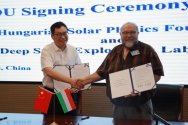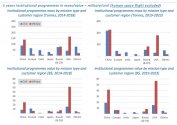On the morning of July 12, 2024, Professor Fay Schippengen, Chairman of the Hungarian Heliophysics Foundation, led a delegation to visit the headquarters of the Deep Space Exploration Laboratory in Hefei.
Wu Yanhua, chief designer of major projects for deep space exploration, and Hu Chaobin, secretary of the Party Committee and deputy director of the Deep Space Exploration Laboratory, met with Chairman Fay Hippenbogen and his party.
Chief designer Wu Yanhua extended a warm welcome to Chairman Fay Hippenbogen and his entourage, and introduced the relevant situation of the Deep Space Exploration Laboratory and the progress of major deep space exploration missions.
Chairman Fay Schibenbergen expressed appreciation for China's achievements in the field of deep space exploration and introduced in detail the basic situation, international cooperation and future plans of the Hungarian Heliophysics Foundation.
The two sides said they would strengthen cooperation in the field of deep space exploration. After the meeting, the two sides signed the Memorandum of Understanding on Cooperation of the International Lunar Research Station (ILRS).

Wu Yanhua, chief designer of major projects for deep space exploration, and Hu Chaobin, secretary of the Party Committee and deputy director of the Deep Space Exploration Laboratory, met with Chairman Fay Hippenbogen and his party.
Chief designer Wu Yanhua extended a warm welcome to Chairman Fay Hippenbogen and his entourage, and introduced the relevant situation of the Deep Space Exploration Laboratory and the progress of major deep space exploration missions.
Chairman Fay Schibenbergen expressed appreciation for China's achievements in the field of deep space exploration and introduced in detail the basic situation, international cooperation and future plans of the Hungarian Heliophysics Foundation.
The two sides said they would strengthen cooperation in the field of deep space exploration. After the meeting, the two sides signed the Memorandum of Understanding on Cooperation of the International Lunar Research Station (ILRS).






















